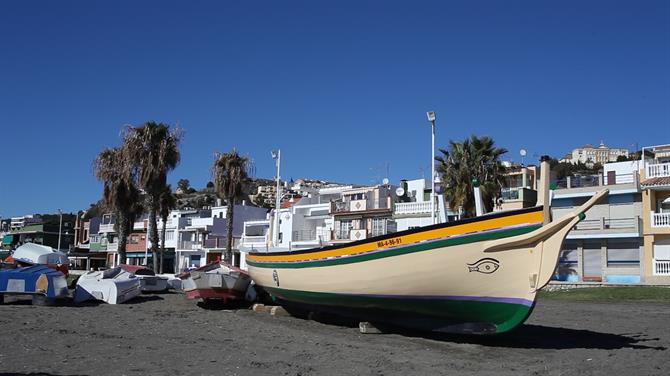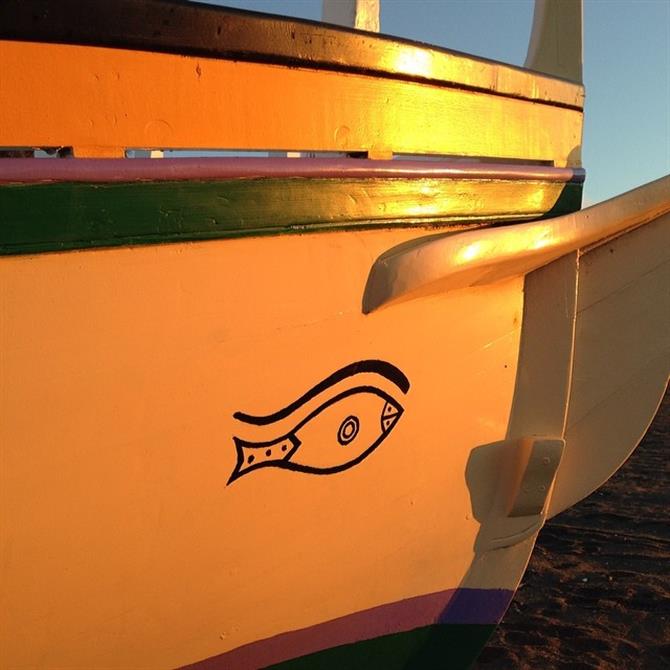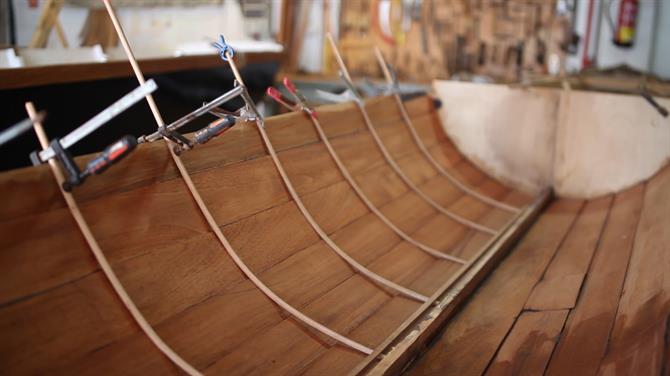The Jábega is an emblematic fishing boat that is now only found in the waters around Málaga. Its origins can be traced all the way back to Phoenician times.
Video about Jábegas
With an average length of 6 metres and a width of 1.80 metres, the uniquely shaped bow and shallow draft make Jábegas very quick in the water. They usually take eight rowers plus a coxswain, who uses a shortened oar to steer called 'espailla,' as the Jábegas have no rudder.
The Jábega were used to launch the land-based nets that were commonly used by the fishermen of Málaga. A practise that was banned some twenty years ago.

The nets, which could measure up to 100 metres in length were towed out by the Jábegas from the beach in a wide arc to a point further up the shore where the 'marengos,' on land, would gradually close the net together and start the arduous task of hauling the net to land the catch.
One of the most distinguishing features of the Jábegas are their brightly painted designs. The boats are painted with traditional symbols in primary colours.
The prow is often carved with the head of a snake and the bow is characterised by 'eyes' that symbolise divinity and the origins of life.

Where to see Jábegas
Some of the best examples of Jábegas can be found by taking a stroll along the promenades of El Palo and Pedregalejo, just east of Málaga city.
You can also visit one of the last Jábega shipyards and eco-museums, situated just at the end of Pedregalejo's promenade - details are below.

The tradition has been kept alive by a dozen or so Jábega associations that are dotted along the coast from Rincon de la Victoria, to Carihuela in Torremolinos. The close knit groups of family and friends are dedicated to preserving the age-old custom.
The associations and rowing clubs purchase the boats with funds raised locally and the Jábegas become a community asset. Some of the boats are lovingly restored from old deteriorated shells, or built from new as the craftsmanship and skill lives on in parallel with the clubs.
The Jábegote
The fishermen who work with the Jábegas were known locally as Jábegotes. Another Malagueño tradition that was very closely associated with the fishermen was the singing of a type of sea shanty that had its roots in flamenco and Málaga's verdiales. An unmistakable tune that is slowly being lost in the sands of time.
The Jábegas and their communities are an integral part of Málaga's past. It wasn't so long ago that the entire village would come out first thing in the morning and help the Jábegotes haul in the day's catch. These days, the tradition is being kept alive by a few of their grandchildren.
The Nereo eco-museum/shipyard is one of the last places in Spain which actually makes and produces Jábegas. You can visit the workshops, see some of the traditional Jábegas and on special occasions be taken out on one of the boats. They also occasionally offer courses on traditional knot-tying, carpentry and have a rowing club. Best to call beforehand +34 952 291198, website.
Opening times -
Astilleros Nereo
You can visit from Mondays to Saturdays and the last Sunday of every month.
Monday to Saturday 10 h. to 14 h. and 17 to 20 h.
Last Sunday of every month 10 h. to 14 h.
